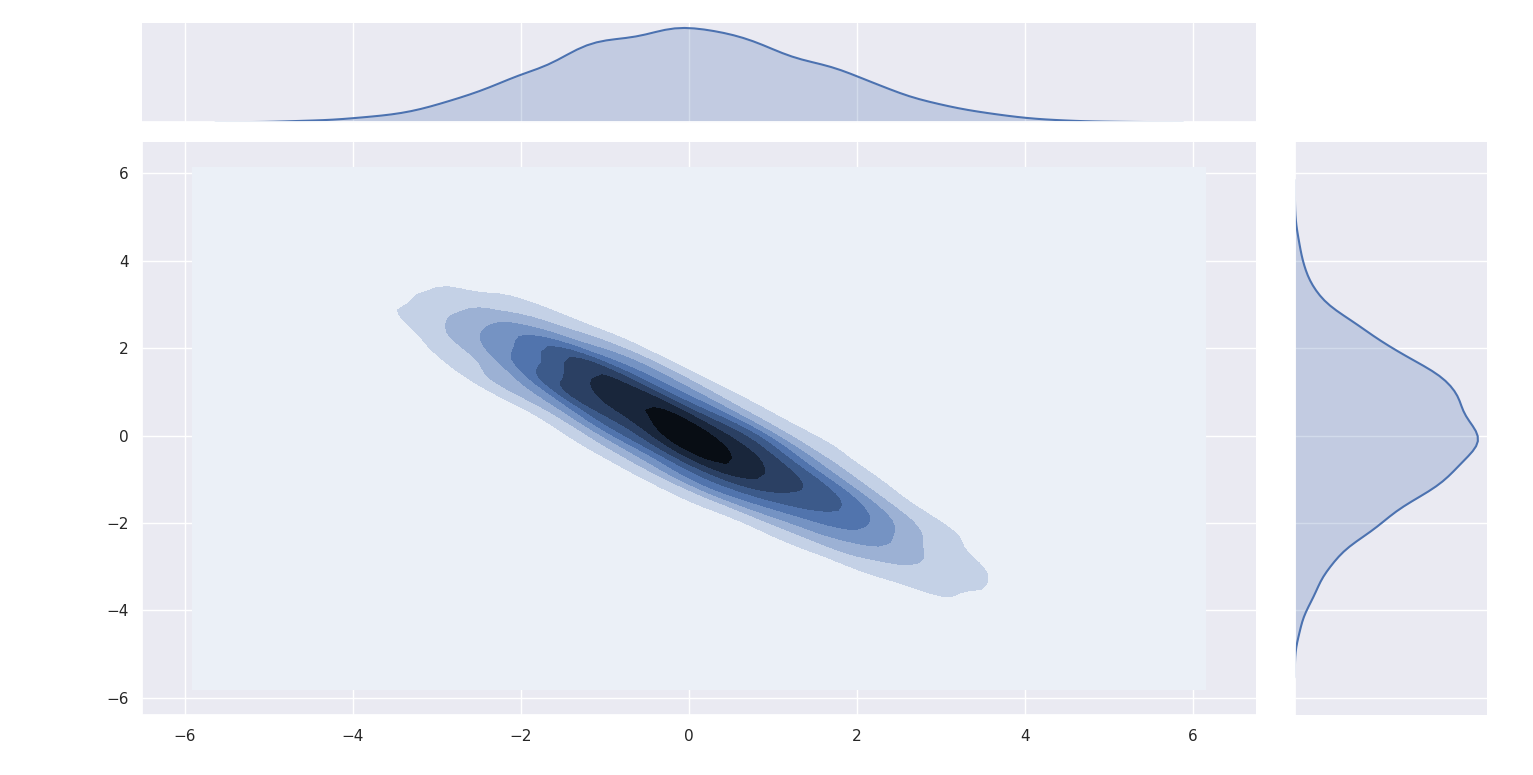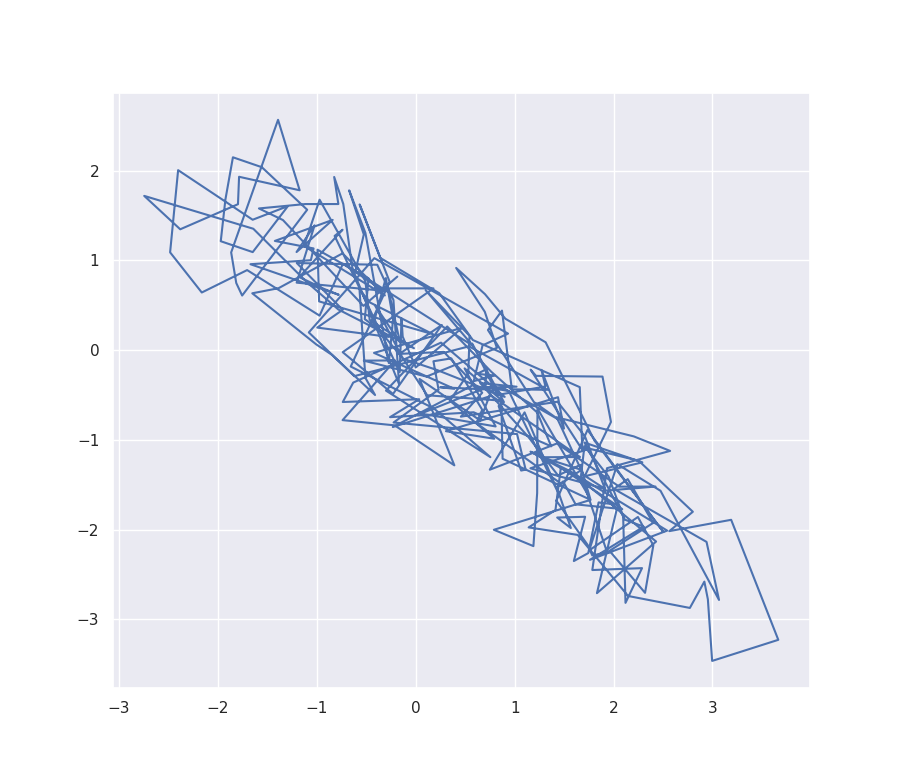MCMC Sampler
The github repository is
Description
MCMC is a python implementation of some MCMC sampler algorithms that can leverage pyTorch’s automatic differentiation to sample from a given (unormalized or not) density distribution.
For instance, if we were to sample from a Gaussian distribution using MALA algorithm, one can do like in the mcmc_test.py file and get the following kernel density estimation and sample trajectory:


Within the mala_test.py file, one can also find a small function to compute autocorrelation and check that the Markov Chain “mixes” well:

To help tuning parameters of the MALA algorithm, it is possible to print the acceptation ratio. A good empirical fit for this is around 63%. It means that the chain is exploring enough so that around 63% of the propositions are accepted as the next step.
One can also find a small tutorial in the tutorial.ipynb file.
Practical use
A useful example can be found in mala_test.py as well as in the tutorial.ipynb.
The repository is organized around two files:
-
mcmc.pywhich contains several classes associated to MCMC sampler algorithms. Since we need a density function and a gradient in Langevin methods, one can find an important class in the next file. -
function.pywhich contains one class, MODEL, that is used by the MCMC classes. MODEL should contains all the information one have about the distribution one whish to sample from. The bare minimum is either an (unormalized) density or log-density. This function should be written using pyTorch only function so that one can use autodifferentiation to compute gradient of the log-density with respect to the input. However, if the gradient is known, you can still use it in the MODEL.
Example
Assume that one have an implementation of the density function we whish ta sample from. Then a minimal working example would be like:
1
2
3
4
5
6
7
8
9
10
11
12
13
14
15
16
17
18
19
20
21
22
23
24
25
26
27
28
29
30
from mcmc import MALA
from function import MODEL
DIMENSION_INPUT_SPACE = int nbr
GRADIENT_STEPSIZE = float nbr
RANDOM_STEPSIZE = float nbr
INITIAL_POINT = torch.randn(DIMENSION_INPUT_SPACE)
NBR_SAMPLES = int nbr
def density_to_sample_from(x):
# ...
# Some pyTorch thingsgummy
# ...
return density_at_x
# Create probabilistical model
probabilistical_model = MODEL(density=density_to_sample_from)
# Create MCMC method
mala_mcmc = MALA(probabilistical_model, metric=torch.eye(DIMENSION_INPUT_SPACE),
gradient_step=GRADIENT_STEPSIZE,
random_step=RANDOM_STEPSIZE,
initialization=INITIAL_POINT)
# Sample
SAMPLES = mala_mcmc.fit(NBR_SAMPLES)
# Then one can plot some dimensions
# Please see mala_test.py or tutorial.ipynb